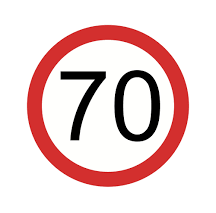Dual Carriageway Speed Limit
A dual Carriageway speed limit refers to the maximum legal speed for vehicles using public roads in that particular country. In most countries, the legal speed limit is set as maximum or minimum speed, firstly for a particular road and secondly, for a particular vehicle.

The dual carriageway speed limit is also set for a particular section of a road at which vehicles can travel in that particular section of the road. Therefore, the dual carriageway speed limit varies according to the different roads, different vehicles, and also different countries. The national speed limit on a dual carriageway in the UK for each vehicle is as below.
Dual Carriageway Speed Limit in the UK
| Vehicle Type | Speed Limit |
|---|---|
| Speed Limit for Cars, Bikes, and Car-derived vans in the UK | 70 mph |
| Speed Limit for Car with a trailer in the UK | 60 mph |
| Speed Limit for Buses, Coaches, and mini Buses up to 12 meters | 60 mph |
| Speed Limit for Goods Vehicles weighing up to 7.5 tonnes in the UK | 60 mph |
| Speed Limit for Goods Vehicles weighing up to 7.5 tonnes in Scotland | 50 mph |
Note
The dual carriageway speed limit will be different in built-up areas, therefore, be careful while driving in the built-up section of the dual carriageway.
Are all Dual Carriageways 70 mph?
The speed limit on dual carriageways may be less than 70 mph because local administration can fix the speed according to the road condition and the safety of drivers and other road users. Other than this, in the UK, most dual carriageways are 70 mph.
On the other hand, if you are traveling in the United States. The national speed limit will be between 55 and 75 mph according to the different states.
The speed limit on each road is indicated on a nearby traffic sign. Traffic signs may show a speed limit in mph (miles per hour), in km per hour, or may use a national speed limit (NSL).
You May Also Like
What is the speed limit in a school zone?
End of Dual Carriageway sign – What does it mean?

